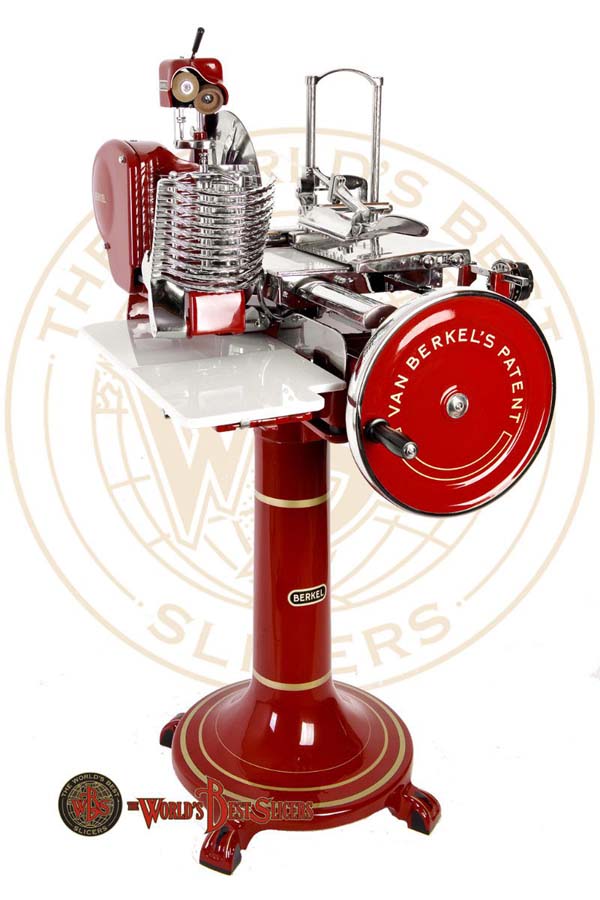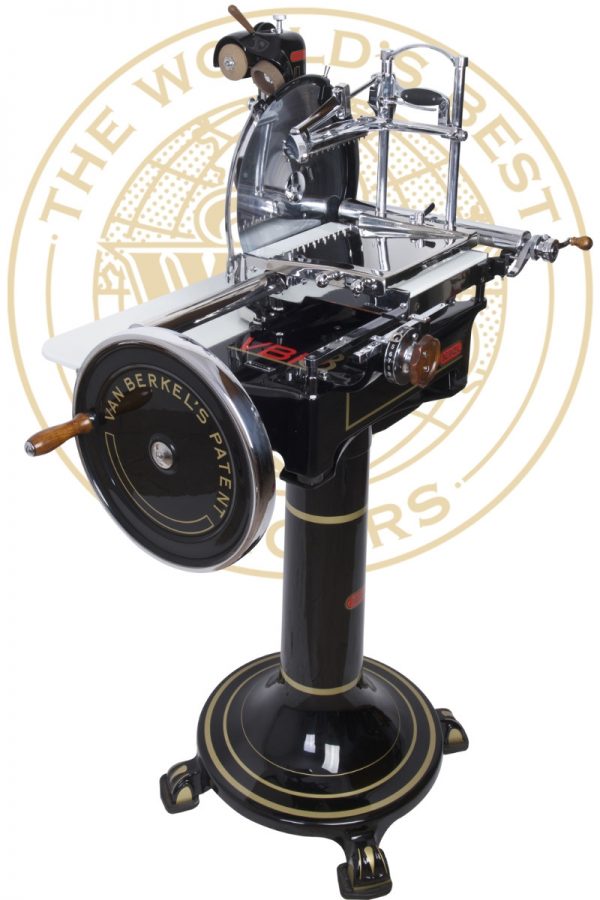Berkel Europe Model C
The model C slicer is the third model built by Wilhelmus Adrianus van Berkel and patented in Germany (Deutsches Reichs Patente), as indeed happened in the very first models produced, such as the Berkel model A and the Berkel model B.
The model C slicer is the third model built by Wilhelmus Adrianus van Berkel and patented in Germany (Deutsches Reichs Patente), as indeed happened in the very first models produced, such as the Berkel model A and the Berkel model B. The Berkel slicer model C uses a blade of 350 mm. diameter in a concave shape which is fixed on the shoulder of the machine – It has a cutting capacity of 250 mm. The slicer is 870 mm long. 650mm wide. 485 mm high.- Requires a support space of 490 mm. x 340mm. The worm screw which is used to move the plate where the product to be cut is fixed is located in the rear part of the slicer carriage. The model C slicer has a 14-position slice thickness adjustment fixed on the right side of the slicer and has an arc shape, and is completely devoid of any system for sharpening the blade, which in any case was adapted later. It was produced only in red and the metal parts are originally nickel-plated. Currently it remains one of the rarest slicers produced in the historical period by the famous Rotterdam manufacturer "Van Berkel's Patent" and is one of the most sought after by collectors of these works of art of incomparable beauty, which have become the secret dream of many people all over the world. Like almost all the slicers produced by the renowned house, it was possible to have the original pedestal as an option, very particular because it is produced without the separate support cross .The restoration is carried out in the laboratories of "The World's Best Slicers” respecting the principle of conservation of parts. Arranging for the disassembly and recovery without any replacement of worn or broken pieces, carrying over the material by welding and subsequent milling or turning of the pieces to be able to bring them back to their original dimensions and functionality. For missing parts, original spare parts acquired from production plants or from incomplete slicers are used. The painted parts, which were first stripped by cryo-paint stripping and carefully prepared, are painted using new generation paints that comply with health and pollution regulations and reformulated in the correct shade of color used in the past. The decorations are strictly performed through the application of copal varnish decalcomanias, avoiding any type of mystification, such as airbrush decorations, stickers or any other type of fantasy decoration. Each restored slicer is delivered with an Official Certificate of Originality and Warranty.















